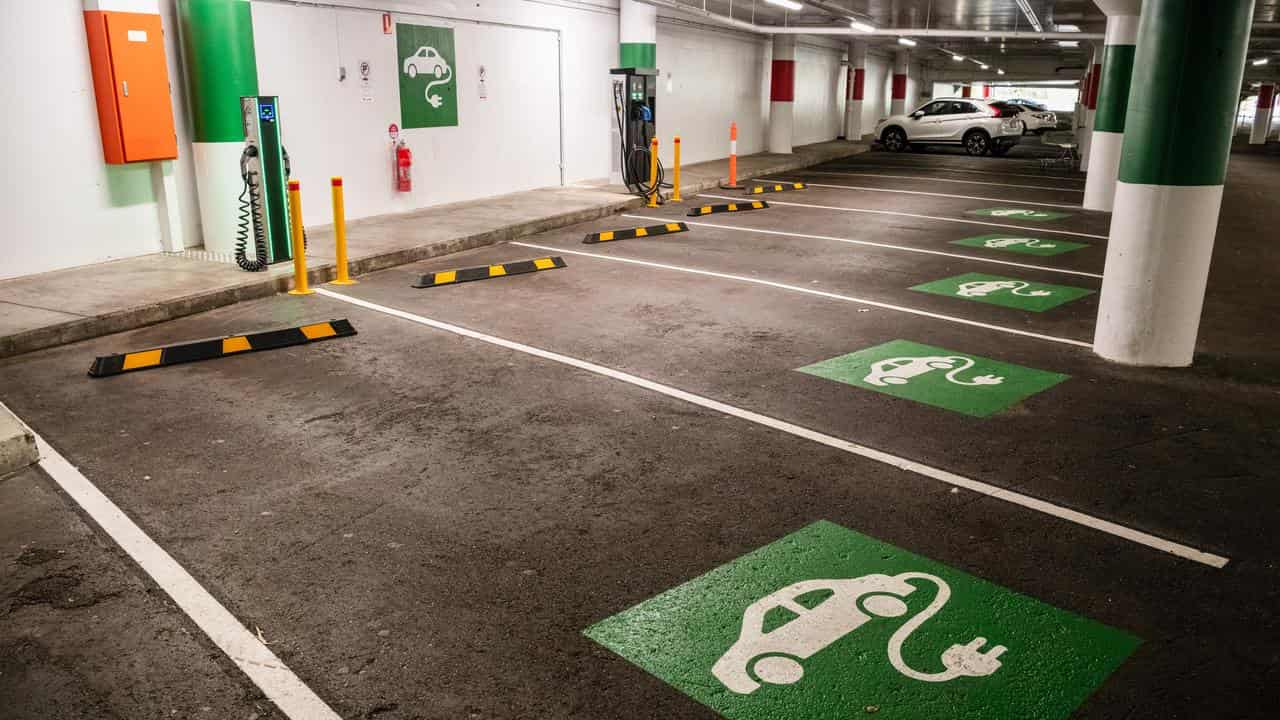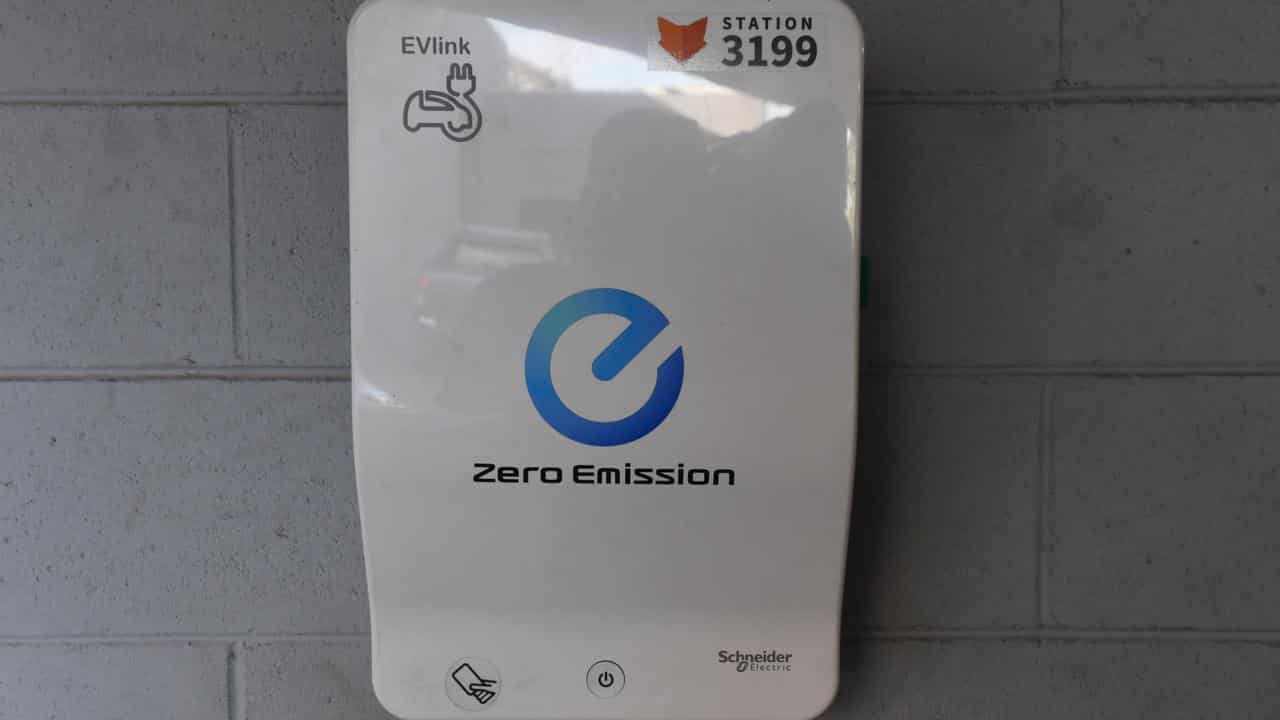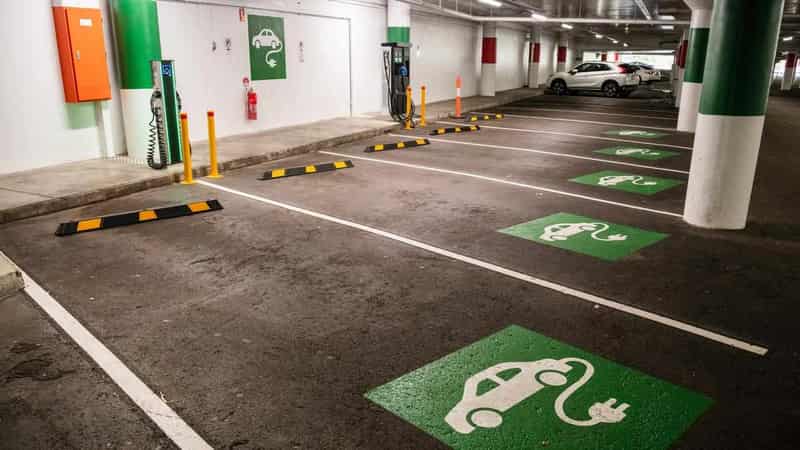
Electric vehicle range anxiety is a familiar feeling for Sydney apartment dweller Fred Tuckwell.
The distance between his home on NSW’s South Coast and his Sydney apartment is 300km which, he says, also happens to be the maximum range of his battery-powered Volvo.
“My wife and I would like to drive our electric car out there more often but it’s difficult because there’s no charging facility,” he said.
“If we had a charging facility, we would certainly drive it there.”
It is a challenge experienced by thousands of Australians who are eager to invest in low-emission cars but are being held back by the lack of support within their apartment buildings.
Solar groups want governments to address the issue by handing out more grants.
The motoring industry says there needs to be more guidance, while engineers are warning the problem will only grow in size and complexity.
But with state funding programs designed to address the issue stalled, experts say a lack of assistance may ultimately slow Australia’s transport transition.
More than 2.6 million Australians live in apartments, according to the Australian Bureau of Statistics, and many unit blocks were constructed long before electric vehicles came into play.
Solar Citizens chief executive Heidi Lee Douglas says this is why so many people are asking the organisation about upgrades to bring their buildings into the modern era.
“We get a lot of questions from the community about how they can make buildings EV-ready, particularly pre-existing buildings,” she said.

“The demand for electric vehicles is there and it’s now about making sure that the apartments we have can meet that demand.”
However, installing vehicle-charging infrastructure inside older buildings can be challenging.
In 2023, the NSW government launched a $10 million scheme to tackle the issue by part-funding EV-charging feasibility studies for apartment blocks.
It also offered grants to cover a percentage of infrastructure and software costs if upgrades went ahead.
But Ms Douglas says the scheme closed after five months due to its popularity and Solar Citizens would like to see the NSW government bring it back, and for other states to adopt a similar approach.
“If we have good programs like that that are very popular, why not lean into them,” she said.
“Apartments have been overlooked and they’ve been put into the too-hard basket.”
But while the NSW program opened for just a short time, Electric Vehicle Council energy and infrastructure head Ross De Rango said it could provide ongoing benefits for owners’ corporations looking to upgrade their buildings.
While each building's requirements would be different, the feasibility studies conducted as part of the project, if shared, could be valuable to others.
“We’re expecting the NSW government program to fund in the order of 100 to 200 strata buildings to make themselves EV-ready,” he said.
“We’re also expecting that the learnings that come from this program will form a recipe book that will enable the huge variety of strata buildings in Australia to find practical, worked examples of how to do EV readiness in a building like theirs.”
Solar Choice chief executive Jeff Sykes says the NSW program also underlined the importance of undertaking a feasibility study before embarking on an EV-charging project.

The studies, which can cost between $2000 and $10,000, assess a building’s power supply, capacity and consumption, and outline options that range from so-called trickle-charging using wall outlets to level-two electric vehicle fast chargers that each require a dedicated circuit.
The best option will be different for each building and its residents and Mr Sykes recommends they seek independent advice to avoid having an assessor decide on their behalf.
“We often come across buildings where the owners have been told the only option is level-two fast-charging with a particular brand of chargers and it will cost $300,000,” he said.
“When we do a feasibility study, they realise they can actually do this with trickle charging and it’s only going to be a $25,000 project that sets that building up for the future.”
The price gap, he adds, can make the difference between a project going ahead or being abandoned.
And the availability of EV charging in homes could have an impact on more than just apartment dwellers.
Most electric car drivers recharge their vehicles at home and, if they can't do so, motorists may be less likely to invest in vehicles that can help reduce Australia’s transport emissions.
“The ability to charge at home is a key factor for many drivers in the decision to acquire an EV,” Mr De Rango told AAP.
“International data has shown that the ability to charge at home is also a key factor in drivers who have switched to an EV not switching back to petrol.”









